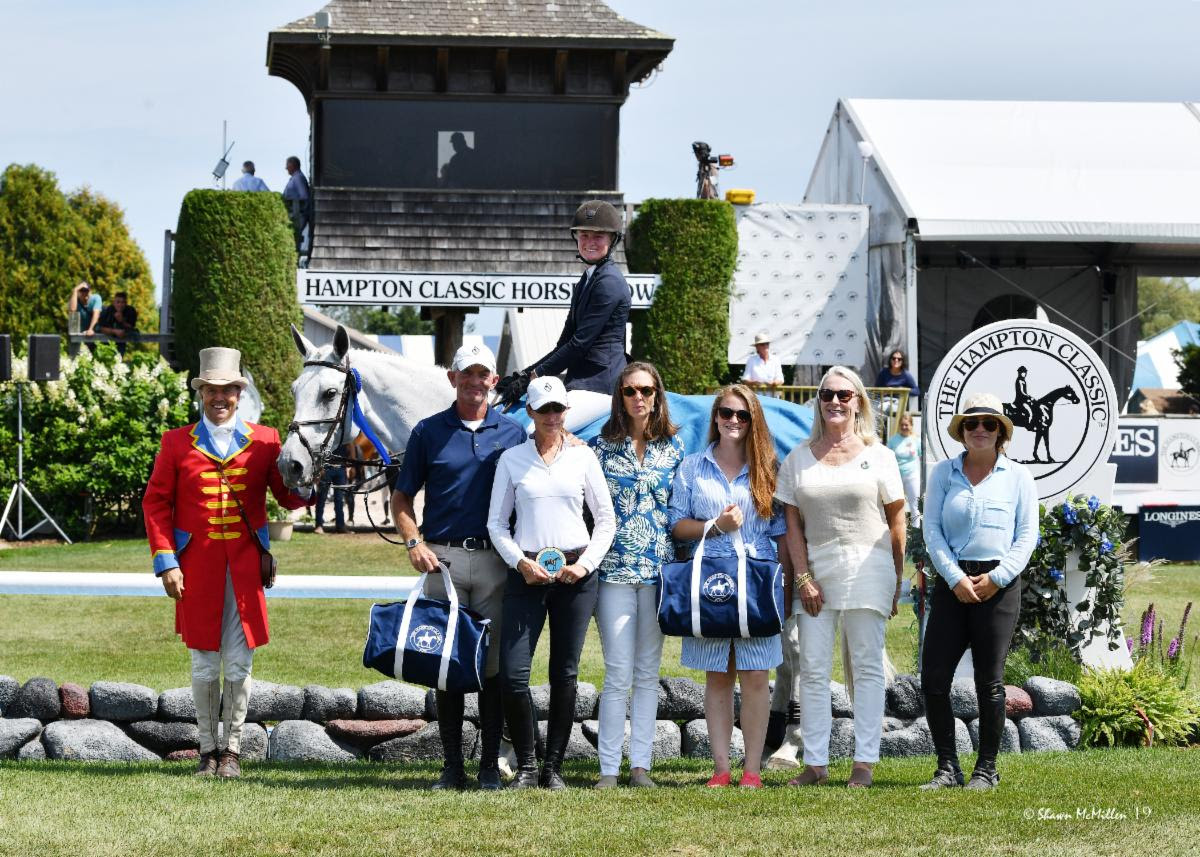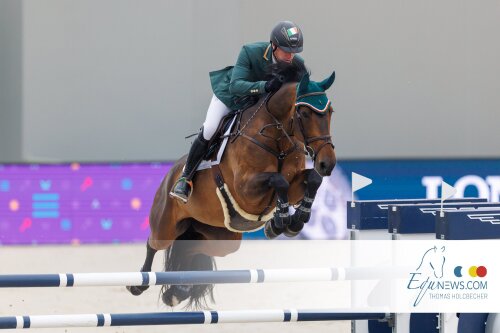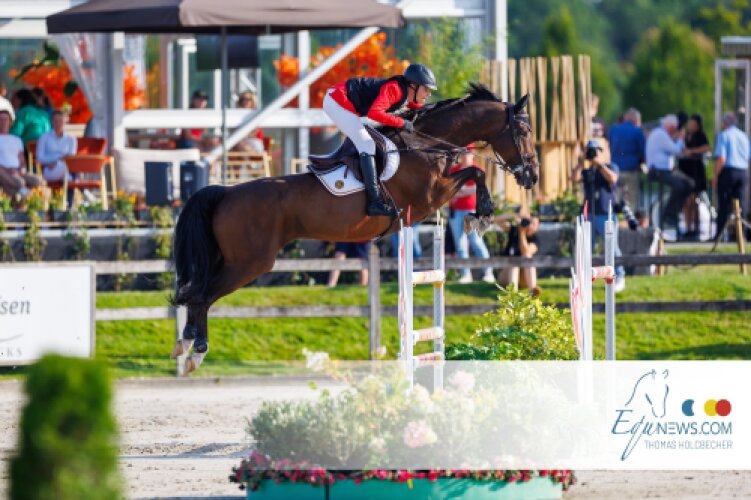Following two rounds of competition Saturday, sixteen-year-old Ava Ellis of Annapolis, MD, came out on top in the $10,000 Equitation Championship presented by Palm Beach International Academy.
Twenty-four riders started the first round at 8:00am, which included the challenging natural obstacles of the bank and the open water. Other than the ambitious time allowed set on a pace of 400mpm, nothing else had as great of an influence on the outcome of this Championship as these obstacles in the first round.
Ellis received a first-round score of 87 points and a second-round score of 91 points to finish with an overall total of 178. Second place went to 2018 winner Mimi Gochman with a final total of 176 points, and third went to Elli Yeager with a total of 171 points.
“I competed in this class with him last year, so he has seen the bank and the water here before,” said Ellis following the presentations. “We also went schooling off-property here in the Hamptons, where we were fortunate to have access to a beautiful bank and water to practice over. I was nine seconds under the time allowed in the first round, and in the second round I was looking at being efficient and tidy and keeping the corners nice and tight. The time allowed is always on my mind.”
International course designer and Olympic silver medalist Michel Vaillancourt set the two tests and didn’t hesitate to identify that the issues with the natural obstacles came from a lack of preparation on behalf of the riders and horses.
“The natural obstacles cause trouble every year,” said Vaillancourt. “Obviously the horses that had problems at the bank and the water have not prepared for it very well. The more seasoned trainers who have been here a couple of years, know what to expect and make sure their horses and riders are prepared.”
“Another challenge that has been in place for a number of years is the tight time allowed,” Vaillancourt continued. “It’s interesting for me to watch these equitation riders because they are so accustomed to doing certain things a certain way, and they never change their rhythm. I try to force them to go short, force them to go longer on certain distances. Especially in the second phase where I opted not to use the natural obstacles again -- nobody changes their rhythm. They must learn how to adjust their rhythm in order to ever be able to make the time allowed.”
Missy Clark trains Ellis and has coached some of the most successful equitation riders of the past 20 years. Clark summarized why it was so important for these riders to be able to adjust to the demands of the jumper ring and this Championship in particular:
“It’s great that the time allowed is so tight,” commented Clark. “I knew it was doable. Everything we do at North Run is geared toward better riding, not necessarily ‘equitation.’ I love that the time allowed is tight. When you go to Europe or Spruce Meadows, you’re going to have to handle the tight time allowed just like everybody else. It’s a great introduction to correct riding under this tight time allowed.”
press release


